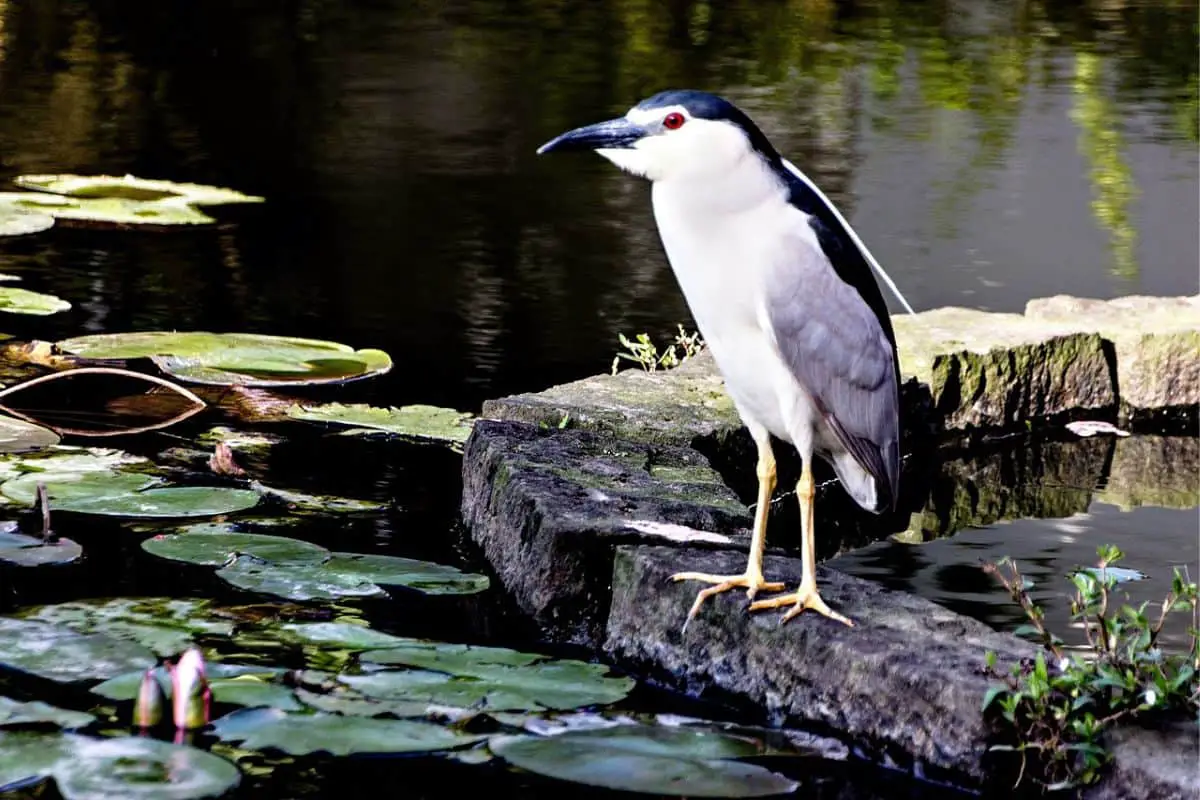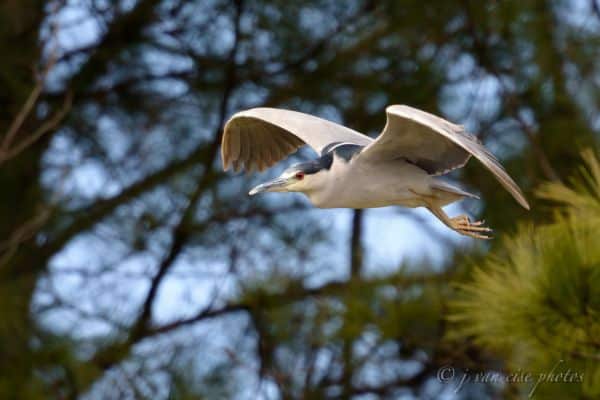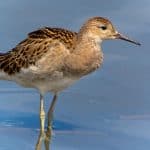Common Name: Black-crowned Night-heron
Scientific Name: (Nycticorax nycticorax)| Size | Diet | Range in Hawaii | Status in Hawaii |
|---|---|---|---|
| 25 in. - 28 in. | Small fish, amphibians, crustaceans, and insects | Kaua'i, O'ahu, Moloka'i, Maui, and Big Island | Least Concern |
The Black-crowned Night-Heron (Nycticorax nycticorax) is a striking and distinctive bird species that is known for its black crown and red eyes. With its unique appearance and stealthy hunting abilities, this heron is a fascinating sight in its natural habitat. In Hawaii, the Black-crowned Night-Heron is a native resident and indigenous species, making it an important part of the island’s ecosystem.
In this article, we’ll explore the fascinating world of the Black-crowned Night-Heron and learn more about its presence in Hawaii.
Black-crowned Night-heron
Appearance

With its elegant allure and captivating presence, the Black-crowned Night-Heron stands out as a true marvel of nature. Sporting a sleek plumage that blends shades of gray and black, this avian wonder exudes an air of mystery and sophistication. Standing approximately 25 to 28 inches tall, its statuesque figure commands attention.
The crowning glory lies in its regal head, adorned with a striking jet-black crown, contrasting against its pale-gray face. Its bright red eyes peer curiously from beneath the crown, adding an element of intrigue to its already captivating appearance.
Diet
While its primary fare consists of aquatic creatures, it demonstrates a keen adaptability in its choices. The Black-crowned Night-Heron employs its sharp beak to capture a plethora of delectable morsels. Small fish, amphibians, crustaceans, and even insects fall victim to its hunting prowess.
Nesting
These skilled architects select their nesting sites with utmost care, often choosing dense trees, shrubs, or even man-made structures near water bodies. Their communal nesting colonies create a spectacle of activity and social interaction.
With great precision and patience, they construct sturdy, platform-like nests using an assortment of materials such as twigs, reeds, and sticks. These nests are strategically woven together to provide a safe haven for their precious offspring.
During the breeding season, the nests become bustling hubs of life as males and females work in harmony to ensure the comfort and security of their young. Within the depths of these intricately constructed abodes, the female lays a clutch of pale blue or greenish eggs. Both parents take turns incubating the eggs, exhibiting remarkable dedication and shared responsibilities.
As the days pass, the once-empty nests transform into a chorus of chirping and feeding activity. Fuzzy, down-covered chicks hatch from their protective shells, their presence bringing a new energy to the colony. Under the watchful eyes of their vigilant parents, these young nestlings grow rapidly, developing into elegant, independent beings.
Behavior

As the sun dips below the horizon, these nocturnal hunters awaken, embracing the cover of darkness as their domain. With a grace that belies their size, they navigate their wetland habitats with stealth and precision.
The Black-crowned Night-Heron is a master of patience, often observed standing motionless for extended periods, patiently waiting for its prey to approach. With lightning-fast reflexes, it strikes at unsuspecting fish, amphibians, and invertebrates, capturing its meals in a matter of seconds.
Despite their solitary hunting habits, they are often found nesting and roosting in large colonies, showcasing their social tendencies. These gatherings create a symphony of squawks and calls, as individuals communicate with one another in a unique avian language.
When not engrossed in hunting or socializing, the Black-crowned Night-Heron demonstrates its adaptability by venturing into a wide range of habitats, including freshwater marshes, coastal areas, and even urban environments. This versatility speaks to its ability to thrive in diverse landscapes.
One cannot help but be captivated by the elegance of their flight. With slow, deliberate wingbeats, they traverse the skies with a seemingly effortless grace. Their broad wings and agile movements make them a marvel to behold.
Habitat

The Black-crowned Night-Heron thrives in diverse wetland habitats. From serene marshes to coastal estuaries, it seeks out calm waters, lush vegetation, and even urban environments. This adaptable bird finds solace and sustenance in the intricate tapestry of wetland ecosystems.
Range
The Black-crowned Night-Heron, a native resident of Hawaii, has a worldwide range spanning from southern Canada to southern Chile, Eurasia, Africa, and the Hawaiian Islands. It is the only resident species in Hawaii that is not endemic at the subspecies level, indicating recent colonization or genetic infusion. Found commonly on Kaua’i, O’ahu, Moloka’i, Maui, and Big Island, these herons forage along edges of ponds, wetlands, shorelines, and marshy areas.
They occasionally nest on offshore islets with seabird colonies and can be seen near aquafarms and fish hatcheries. While their populations have experienced fluctuations, their presence in Hawaii as residents and vagrants has been documented. In the Northwestern Hawaiian Islands, they have been observed as rare vagrants.
Conservation Status
The Conservation Status of the Black-crowned Night-Heron reflects both its resilience and the challenges it faces in a changing world. Classified as a species of “least concern” by the International Union for Conservation of Nature (IUCN), this bird benefits from its adaptable nature and broad habitat range.
Interesting Facts
1. Cultural significance
In some cultures, the Black-crowned Night-Heron holds symbolic meanings. It is associated with attributes such as wisdom, solitude, and the hidden mysteries of the night.
2. Flexible neck
The Black-crowned Night-Heron possesses a uniquely flexible neck. It can retract its neck into an S-shaped curve, similar to other heron species, allowing for rapid striking movements when capturing prey.
3. Wintering in new locations
Some Black-crowned Night-Herons undertake significant migrations during winter, traveling to new and unexpected locations in search of suitable feeding grounds. This behavior contributes to their adaptability and ability to survive in different environments.
4. Skilled divers
While primarily waders, Black-crowned Night-Herons can also demonstrate impressive diving abilities. When chasing after prey in deeper waters, they can submerge themselves completely and swim underwater, using their agile wings to navigate beneath the surface.
5. Environmental indicators
Black-crowned Night-Herons are considered “indicator species” because their presence or absence can provide valuable insights into the health of wetland ecosystems. Monitoring their populations and behaviors can help scientists assess the overall well-being of these vital habitats.
Frequently Asked Questions
1. Are Black-crowned Night-Herons strictly nocturnal?
While primarily nocturnal, Black-crowned Night-Herons can also be active during the day, especially during the breeding season or when food availability is high. However, they are most active and do the majority of their hunting at night.
2. How long do Black-crowned Night-Herons live?
Black-crowned Night-Herons have been known to live for more than 20 years in the wild. Their longevity can be attributed to their adaptable nature and efficient hunting skills.
3. How do Black-crowned Night-Herons communicate?
Black-crowned Night-Herons produce a range of vocalizations. Their calls can vary from a loud “kwok” or “quark” to a softer, more guttural “wok.” These vocalizations are often heard during courtship displays or in their nesting colonies.
4. How long do Black-crowned Night-Heron chicks stay in the nest?
After hatching, Black-crowned Night-Heron chicks spend around 4 to 5 weeks in the nest, being cared for by their parents. During this time, they grow rapidly and develop their flight feathers and hunting skills.
5. Can Black-crowned Night-Herons be kept as pets?
Keeping Black-crowned Night-Herons as pets is generally not recommended or legal in many countries. These birds are wild creatures and require specific natural habitats and conditions to thrive. It is important to appreciate them in their natural environments and support their conservation rather than attempting to keep them as pets.




